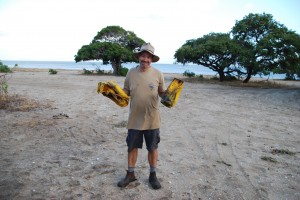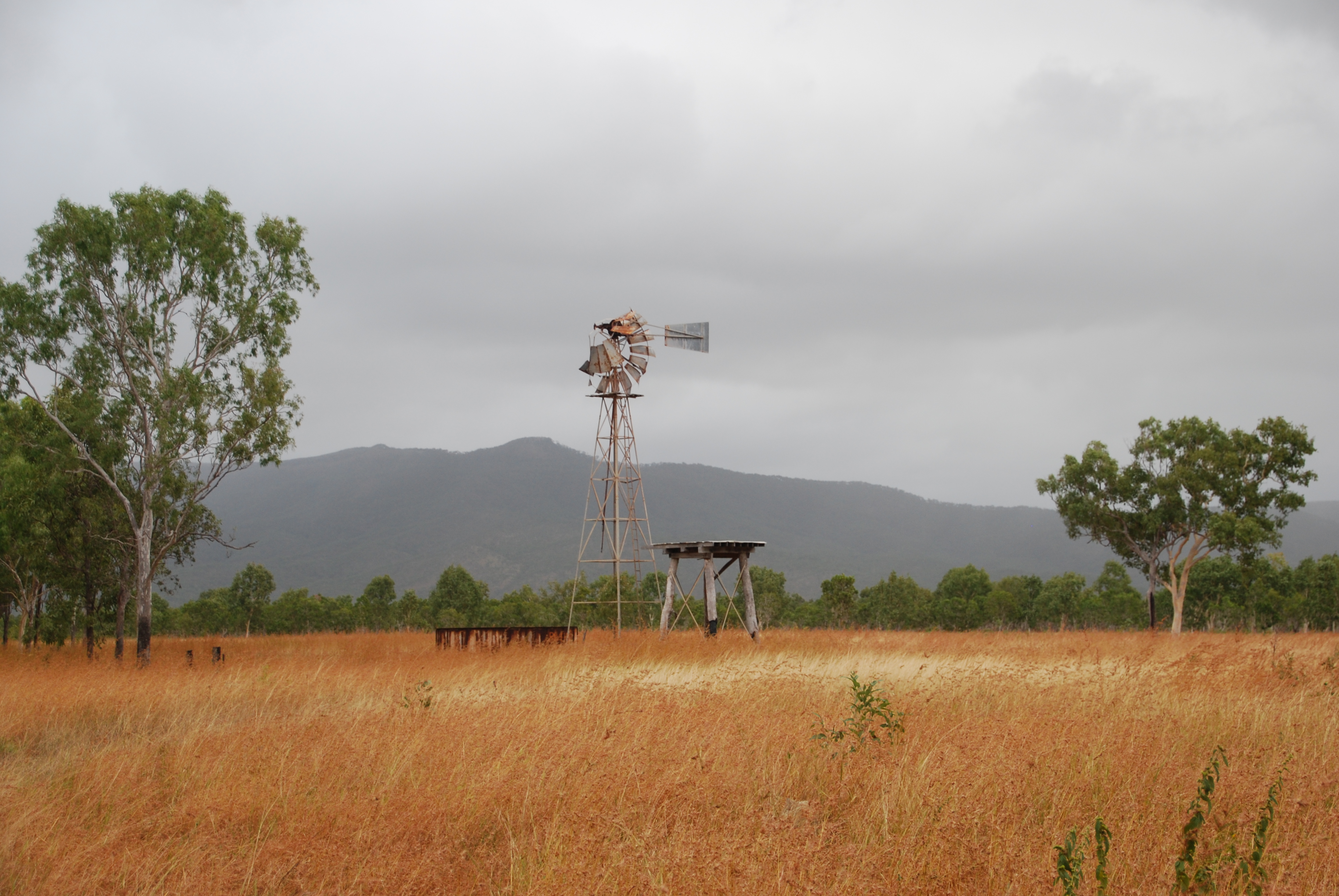Cape Melville
Some corners of Australia are almost forgotten due to the immense size and scope of the continent. One area we had spied on an earlier trip which we felt needed more exploration was the uninhabited area north of Cooktown in far north Queensland called Cape Melville. Covered by untracked national parks and Aboriginal land the Cape is often overshadowed by its much bigger brother Cape York. But in one of the most remote and beautiful places in this region a freak series of events left me yelling out to Julie “Get out of the truck! FIRE!”
The journey through Cape Melville had started well. We left the historic town of Cooktown, passed through the Aboriginal community of Hopevale and headed up the coastal track of virgin bush toward Starke National Park. There are many national parks in Australia without any infrastructure for visitors, and sometimes not even any roads. They were established to preserve a specific, special or unique area from logging, mining or other development. The beginning of a park can sometimes only be seen when local farm fields end. Rogue unbranded cattle are often times seen grazing in the parks, such is the lack of fences. In the Cape Melville area this is quite common.
The drive up the coast along a dusty track included many small water crossings, passing through beautiful untouched tropical woodland and occasional open spaces which featured tall savannah grasses and countless termite mounds. It was special stuff and we were loving the private showing of this unique area.
As the afternoon shadows started to grow we took a side track down to where the Starke River flows into the Pacific. We found some local fishermen camped for the long haul to do some crabbing and fishing but decided to push northward to find a place to camp. Eventually we came to a beautiful little billabong with a flock of noisy cockatoos in the trees and no signs of crocodiles. Crocodiles are a real hazard up north and every waterhole has the potential to house either a freshwater or saltwater croc.
We survived the local dangers and enjoyed a beautiful peaceful night in this glorious setting. The next morning we headed north again along a very slow and rough track, frequently driving through grass as high as the truck in addition to having to negotiate all the bumps, washouts, crossings and holes. So slow was the going that in the first hour we covered only 13 km (7 miles), the following hour we managed 16 km. We also crossed a couple of low passes with very rough tracks and panoramic sweeping views of the Cape from the top. And the whole time we never saw another vehicle.
By early afternoon we had finally made the old ruins of the Wakooka Station and decided to take the northern track for 52 km up to Bathurst Bay and Cape Melville itself. The terrain was similar to what we had experienced the previous two days with the new addition of long deep sand tracks which require skill from the driver and grunt from the Cruiser to push through. When we finally hit Bathurst Bay in the late afternoon the sun was low, the long deep sandy beach was smooth, the calm bay was absolutely stunning and at that moment we felt we were in the most beautiful place in the world. We had to spend the night here.
But firewood was scarce and we were lucky to come upon a spot used by previous campers who had left some wood around their old fire. We collected the wood and tied it to the roof rack amongst our second spare tire, our two empty plastic fuel containers and other wood which was stored in an old hessian sack. We then followed an obscure little track up the coast in search of the perfect private place to camp. It was shaping up as one of the most picturesque nights camping we had ever had.
Suddenly there was a pop and a loud whoosh which sounded like a fast flat tire. I got out of the truck and couldn’t believe what I saw – a large fire on the roof rack above our heads. Wood we had just collected had flames over a foot high and the tire had already burned to such an extent it had popped. I shouted at Julie to get out of the truck, grabbed the last of our precious drinking water from the back of the truck and began pouring it on the flames in a frantic effort to save the whole vehicle from burning.
Within a couple terrifying moments I was able to put most of the flame out, saving only a couple of litres of water for ourselves. Julie handed my gloves up to me and I knocked off the remaining burning embers from the basket and threw off the now totally melted plastic fuel containers. With a bit of luck and quick thinking we were able to save our vehicle from total destruction but were left in a state of shock over what had just happened and what might have happened.
As we thought through the series of events that led up to this disaster what became clear is that some of the wood we had collected from the old camp still had some hot embers, even though neither of us had felt any heat while handling it and tying it on the roof. The embers were probably resting against the old hessian sack and when the truck started to move the wind stoked the hot spots and started a fire. The fire would have spread quickly with the other dry wood and eventually would have started to melt the empty plastic fuel containers. This combined heat would have then started melting the huge spare tire which eventually popped and alerted us to the problem. So we were probably driving through the thick bush for some time with a huge fire on our roof rack and didn’t know it. Not a good look.
By the best of luck in a horrible situation the fire did not catch on our tent which sat on the back of the truck roof. If it had we wouldn’t have been able to stop the flames. It was unfortunate the fuel containers were plastic (we had originally bought medal ones but traded them for the lighter plastic) but luckily we hadn’t put any fuel in them yet. We ran through all the various scenarios that did happen or could have happened, most of them too scary to contemplate, and despite it all gave each other a hug, knowing that we were still standing with a fully operational vehicle on one of the most remote corners of Australia.
We shakily drove down to a secluded spot on the beach and began the process of inventorying the damage and cleaning our truck. Melted plastic had poured down onto the roof of the truck and we couldn’t remove all of it from the brand new paint job. We had lost quite a few straps and bungy cords, all of them melted and burned beyond recognition. The roof rack and basket seemed to have survived the fire but would require some maintenance. We filled our bucket with sea water and cleaned our truck as best we could. It was sickening to see the damage to our new truck and to realise the loss of important equipment but luckily we had saved a bit of drinking water which we would need until we reached civilisation.
So we had survived what can only be described as an incredibly unique and freakish series of events that combined to create the most dangerous situation I had ever faced in a lifetime of four wheel driving and camping. By acting quickly we had recovered the best we could under stressful and scary circumstances. Phew!!

We've got some shopping to do in the next major town to replace our second spare and these fuel containers
That night as we sat around the fire enjoying a well-earned beer or two the strong winds that had followed us for the last week came again in strong gusts. To add insult to injury for the day, one strong gust of wind blew my unattended sentimental camping chair into the fire, burning it to the point that only a major repair job could save it.
The next morning we packed up early and headed out along the long sandy track toward civilisation. But nothing comes easy and the bull dust on the deeply rutted tracks were a tough challenge to get through. This bull dust is not sand, it is more like talcum powder that creates little puffs of dust with every step. When a 3.5 tonne truck tries to plow through it the outcome is never certain. On one occasion while trying to negotiate a slight incline the deep thick bull dust won and the Cruiser came to a bogged stop. Julie and I got out our shovels, dug the dust from around the wheels, applied a few tree branches in the right places and with a bit of a reverse effort and forward momentum we managed to climb onto firmer ground.
We made good progress through beautiful Lakefield National Park, stopping at a few waterholes to admire the huge range of birds that live in these wetlands. Then it was down to the historic Musgrave Roadhouse on the Developmental Road of Cape York where were able to refuel, get water and catch our breath for an hour before moving on. We were feeling a bit dented from our harrowing experience but stronger for having survived it and now ready for whatever the road may throw at us. But please, no more fires!
















